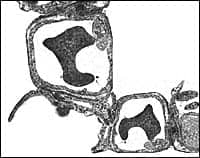Despite being America’s third-leading cause of death, COPD remains dangerously unknown to the general public.
Throughout the year, many nonprofit organizations seek to draw the public’s attention by designating a day, week or month highlighting their particular cause. As a physician, I find it interesting to observe which health conditions and diseases capture people’s hearts and minds and why some, including one of the leading causes of death in this country, garner less attention.
But other diseases stay in the shadows. These are often the conditions that people are less likely to talk about, let alone rally around. One example is chronic obstructive pulmonary disease (COPD), a condition I treat daily in my practice.
COPD has its own awareness month in November every year, and rightly so. It is the third-leading disease-related cause of death in this country1 — after heart disease and cancer — and the only one that is on the rise.

Linda Nici, MD, Providence Veterans Affairs Medical Center and Brown University
A recent survey2 released by the American Thoracic Society (ATS) revealed that a surprising 40% of patients diagnosed with COPD and other chronic respiratory diseases are unaware of how deadly their conditions are. Respondents mistakenly ranked stroke, diabetes and Alzheimer’s above COPD and other chronic respiratory diseases as leading causes of death. In fact, 28% of respondents did not rank COPD and other chronic respiratory diseases in the top three causes at all.
What is especially troubling about this data is that we know low awareness can stand in the way of patients getting the treatment they need. That’s one of the reasons awareness months were created in the first place. True, every November several organizations and medical institutions work hard to raise awareness of COPD and educate patients on how they can manage their symptoms to live better.
Still, much more must be done to ensure patients have the information they need to improve their quality of life. Alarmingly, the ATS survey showed that 62% of people diagnosed with chronic pulmonary disorders have never heard of pulmonary rehabilitation, a treatment option usually covered by Medicare and private insurance.
Pulmonary rehabilitation, a comprehensive 6- to 12-week program that includes, supervised exercise training and self-management education, is considered the standard of care. It is proven to reduce symptoms, increase exercise capacity, alleviate feelings of depression and anxiety and enhance overall quality of life for patients living with chronic respiratory diseases.
In contrast to their lack of awareness about pulmonary rehabilitation, most surveyed patients reported knowing about other treatments, including oxygen therapy (70%) and pharmacological interventions such as long-acting or maintenance inhalers (61%), short-acting or rescue inhalers (52%) and inhaled or oral steroids (52%).
It is important to emphasize that pulmonary rehabilitation and such interventions are complementary treatments for chronic respiratory disorders. Pulmonary rehabilitation coupled with maintenance medications can further improve patients’ sense of wellbeing.
Pulmonary rehabilitation strengthens the muscles to ease the burden on the lungs, which helps patients do more of the routine activities that they find challenging or impossible due to their symptoms. The survey revealed some of the activities people diagnosed with these conditions avoid because of their breathing problems are:
- Climbing stairs (57%)
- Carrying items when they walk (half of respondents or 50%)
- Cleaning the house, doing laundry or tending to other household chores (48%)
- Running errands, such as grocery shopping, outside their home (43%)
- Attending social events or gatherings outside their home (42%)
- Caring for their pet(s), such as taking them for walks (37%)
- Playing with or entertaining their children or grandchildren (37%)
- Cooking or preparing meals (28%)
- Washing their own hair, brushing their teeth or doing other daily personal hygiene tasks (28%)
And yet pulmonary rehabilitation remains grossly underutilized. In fact, an ATS study3 published in the Annals of the American Thoracic Society showed only 1.9% of patients hospitalized for COPD received pulmonary rehabilitation within six months of being discharged after an exacerbation.
In 2017, the National Institutes of Health and the Centers for Disease Control and Prevention created a COPD National Action Plan,4 citing the fact that “many Americans are not aware of the significance of COPD as a major national health concern.” The plan’s goals are to create a unified effort that increases awareness and minimizes the burden of COPD on its many sufferers.
“The importance of smoking cessation and pulmonary rehabilitation as therapeutic interventions should be made central to evidence-based patient care,” the plan said.
Last November, advocates revamped their Learn More Breathe Better and National COPD Awareness Month websites, making it easier to find educational resources. They released a toolkit to help healthcare providers talk to patients about signs and symptoms of COPD during appointments. And they engaged on social media, with hashtags such as #COPDjourney and #COPDperspective.
In spite of those and other best efforts and the fact that 16 million Americans are affected by COPD — with millions more yet to be diagnosed — we hear comparatively little about it.
We know that COPD is a progressive respiratory disorder that’s often, but not always, tied to a history of smoking. COPD causes shortness of breath with activity so as it progresses, quality of life routinely deteriorates for those patients who don’t actively engage in a program to counter its effects. That’s exactly what pulmonary rehabilitation does: improving breathing capability and physical strength while educating patients about topics such as how to live with the disease and how to stop smoking.
Patients can learn more about pulmonary rehabilitation and find a program in their area at LiveBetter.org. The website is part of the Live Better with Pulmonary Rehabilitation project launched by the American Thoracic Society and the Gawlicki Family Foundation to inform and educate individuals with chronic lung disease about the potential benefits of pulmonary rehabilitation.
What can be done to bring attention to a disease that people aren’t talking much about? If you have patients who have difficulty breathing due to lung disease, it’s important to discuss all of the treatment options with them. Early intervention can make it easier to manage symptoms.
Outside of your RT practice, ask yourself if you know someone who struggles to breathe every day or who cannot walk short distances without extreme fatigue. If so, consider asking them if they’re seeking help or if they’ve heard of pulmonary rehabilitation. Share the LiveBetter.org website with them and ask them to talk to their therapist or doctor about this proven treatment. Whether in a professional or personal context, it’s not always easy to discuss someone’s health challenges, particularly if they are tied to lifestyle.
As I look at the calendar chock-full of worthwhile observances this year, it is my goal not to wait until November to spread the word about COPD and other chronic respiratory diseases. I invite you to join me by resolving to bring COPD and other chronic respiratory diseases out of the shadows. It’s time those that are affected stop suffering in silence. RT
Linda Nici, MD, is the Chief of Pulmonary and Critical Care Medicine at the Providence Veterans Affairs Medical Center and a Professor of Medicine at Brown University in Providence, Rhode Island. Dr. Nici is also the medical director of the Providence VAMC pulmonary rehabilitation program. Through this program, she has investigated multiple patient-centered outcomes in COPD patients, including response of depression and anxiety to pulmonary rehabilitation, influence of body mass index on program completion, the effects of self-management education of COPD readmissions rates, and the trajectory of activity levels in COPD patients following pulmonary rehabilitation. She has participated in VA multi-center trials, New England consortium of pulmonary rehabilitation multi-center trials, pharmaceutical company-sponsored trials, and site-specific trials evaluating multiple aspects of integrated COPD care.
References
- Mortality in the United States, 2017 (Centers for Disease Control and Prevention National Center for Health Statistics), November 2018
- News release: “Survey Reveals Majority of Patients Diagnosed with Chronic Pulmonary Disorders Are Unaware of Standard-of-Care Treatment for Their Deadly Disease”, November 2018
- “Participation in Pulmonary Rehabilitation Following Hospitalization for COPD among Medicare Beneficiaries”, Kerry A. Spitzer, PhD, MPA, Mihaela S. Stefan, MD, PhD, Aruna Priya, MA, MSc, Quinn R. Pack, MD, MSc, Penelope S. Pekow, PhD, Tara Lagu, MD, MPH, Victor M. Pinto-Plata, MD, Richard L. ZuWallack, MD, Peter K. Lindenauer, MD, MSc
- COPD National Action Plan, May 2017











I wish I could get better I’m so tired of being such all the time I’m 60 yrs old I won’t to enjoy life But I never feel like doing anything I won’t to enjoy life while I can
Dear Ms. Woody,
Thank you for your comment. You may wish to look at the Live Better website at http://www.livebetter.org to find out whether a treatment like pulmonary rehabilitation would be right for you. If you have any questions, please contact me at [email protected]
Judy Corn